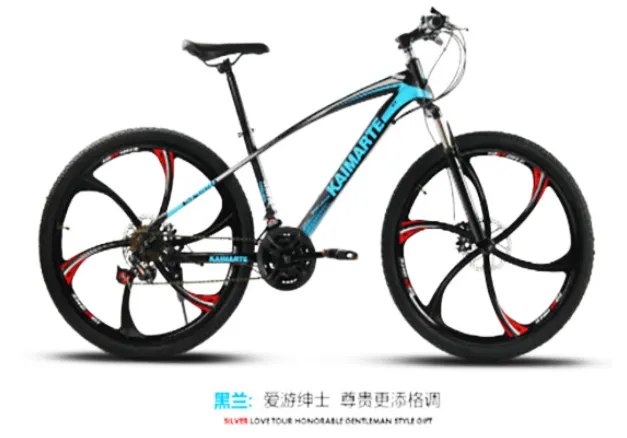9 月 . 23, 2024 05:01 Back to list
mountain bike gear shift
Understanding Mountain Bike Gear Shifting A Comprehensive Guide
Mountain biking is an exciting outdoor activity that combines adventure with physical challenge. One of the critical components that enhance your mountain biking experience is the ability to effectively shift gears. Proper gear shifting allows riders to conquer steep ascents, navigate tricky descents, and maintain control on various terrains. In this article, we will explore the fundamentals of mountain bike gear shifting, including its mechanics, importance, and some tips for mastering the art.
The Mechanics of Gear Shifting
Modern mountain bikes are equipped with multi-speed gear systems, which consist of derailleurs, shifters, and cogs. The primary function of these components is to provide the rider with a range of gear ratios suitable for different riding conditions. Derailleurs are responsible for moving the chain between different gears on the cassette, while shifters, typically located on the handlebars, allow the rider to select the desired gear.
When you shift gears, you change the resistance against which you pedal, influencing your speed and the effort required. For instance, lower gears (often referred to as granny gears) make it easier to pedal uphill, while higher gears allow for increased speed on flat terrains or downhill sections.
Importance of Proper Gear Shifting
Mastering gear shifting is essential for enhancing performance and ensuring comfort during your ride. Riding in the correct gear helps maintain optimal cadence—the rate at which you pedal. A consistent cadence reduces fatigue and allows for better control of the bike, helping you navigate technical sections with confidence. Additionally, avoiding cross-chaining (using gear combinations that cause the chain to be at extreme angles) prolongs the life of your components and leads to a smoother ride.
mountain bike gear shift

Tips for Effective Gear Shifting
1. Anticipate Terrain Changes Awareness of upcoming terrain changes is crucial. Shift to an easier gear before you start climbing to maintain momentum and avoid unnecessary strain. Similarly, shift to a harder gear before descending to adequately control your speed.
2. Practice Cadence Maintaining a steady cadence is vital for power efficiency. Aim for a cadence of 70-90 RPM to optimize performance. Practice shifting up or down as needed while maintaining this cadence for different terrains.
3. Use Both Shifters Many mountain bikes come with dual shifters—one for upshifting and one for downshifting. Familiarize yourself with both to ensure a smoother transition between gears. For instance, when approaching a steep hill, shift down with your left shifter while adjusting the right one to keep your momentum steady.
4. Smooth Transitions Shift gears while pedaling smoothly. Avoid shifting under heavy load, as this can cause chain skipping or damage to the gear system. Instead, ease off the pressure on the pedals during shifts to ensure a clean transition.
5. Regular Maintenance Keeping your gear system well-maintained is essential. Regularly check cable tension, clean the chain, and ensure that the derailleurs are correctly aligned. A well-maintained bike shifts gears more smoothly and reliably.
In conclusion, understanding and mastering gear shifting is a vital skill for any mountain biker. By practicing effective techniques and anticipating terrain changes, you can enhance your riding experience and tackle challenges with greater ease. Happy cycling!
-
The Main Application Scenarios of Mountain Bike
NewsOct.29,2024
-
Suggestions for Selecting and Maintaining Mountain Bike
NewsOct.29,2024
-
Characteristics of Kids Balance Bike
NewsOct.29,2024
-
Characteristics of Baby Stroller
NewsOct.29,2024
-
Characteristics and Advantages of Mountain Bike
NewsOct.29,2024
-
Baby Stroller Purchasing Suggestions
NewsOct.29,2024
-
Suggestions for Purchasing Kids Balance Bike
NewsOct.09,2024

